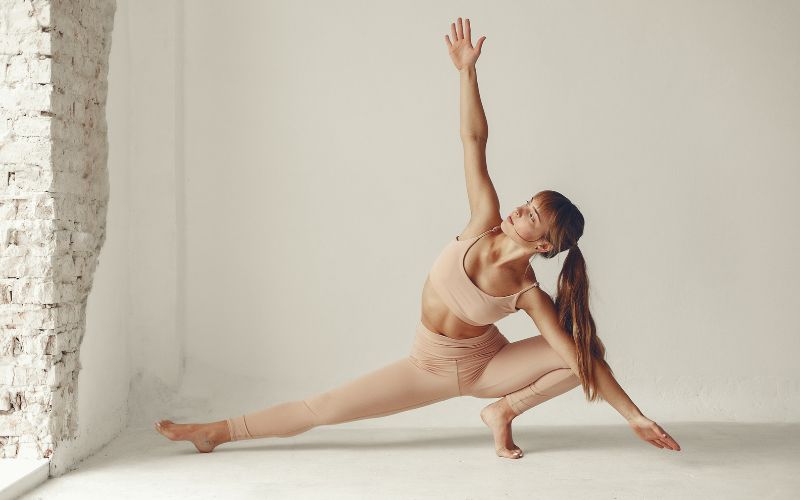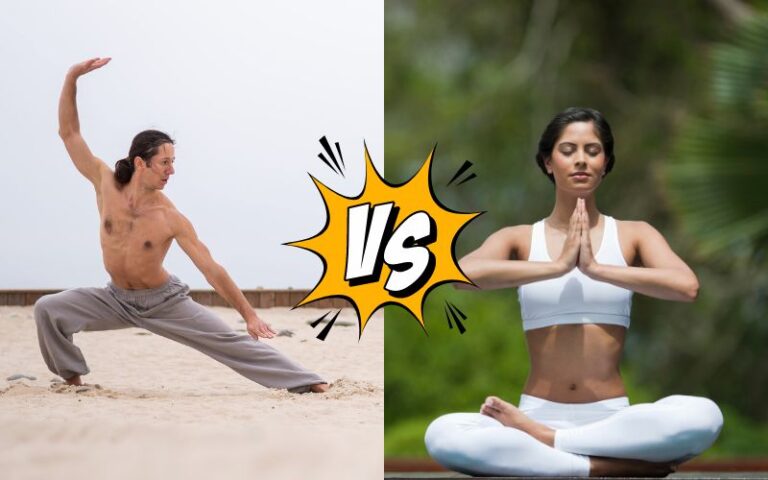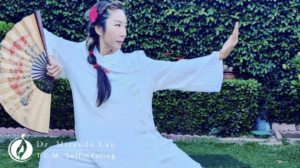Curious about the distinctions between Qigong and Yoga? As individuals seek ways to enhance their well-being, understanding the differences between these ancient practices becomes essential.
In this comparative exploration of Qigong vs Yoga, we’ll delve into their unique approaches and benefits.
Join us as we unravel the fundamentals of Qigong and Yoga, shedding light on their respective roles in promoting physical and mental harmony.
What is Qigong?

Qigong, pronounced as “chee gung,” is a traditional Chinese practice that dates back thousands of years. It combines movement, meditation, and breath control to promote the flow of energy or Qi (pronounced “chee“) throughout the body.
The underlying principle of Qigong is to balance the Qi within the body, which is believed to be essential for overall health and well-being.
Qigong exercises typically involve gentle, flowing movements that can be performed standing, sitting, or lying down. These movements are often repetitive and coordinated with deep breathing techniques to help cultivate relaxation and mindfulness.
Unlike Yoga poses that focus on flexibility and strength, Qigong movements emphasize internal energy flow and self-awareness.
How Many Types of Qigong?
There are many different types of Qigong practices, each with its own unique focus and techniques.
Some common types of Qigong include:
- Medical Qigong: This type of Qigong focuses on using movement, breathwork, and meditation to address specific health issues or imbalances in the body. It is often used as a complementary therapy in traditional Chinese medicine.
- Martial Qigong: Martial arts practitioners often incorporate Qigong exercises into their training to improve strength, flexibility, and mental focus. These exercises can help enhance martial arts skills and overall performance.
- Spiritual Qigong: Some forms of Qigong are rooted in spiritual traditions and seek to cultivate a deeper connection to the divine or spiritual realm. These practices often involve meditation, visualization, and energy work to enhance spiritual growth and awareness.
- Daoist Qigong: Daoist Qigong draws inspiration from Daoist philosophy and aims to harmonize the body, mind, and spirit. This practice emphasizes living in alignment with the natural rhythms of the universe and cultivating inner peace and vitality.
- Buddhist Qigong: Buddhist Qigong integrates mindfulness practices and teachings from Buddhism to promote self-awareness, compassion, and enlightenment. These exercises may focus on breathwork, movement, and meditation to deepen one’s spiritual practice.
While there are many types of Qigong practices, they all share a common goal of promoting health, vitality, and inner harmony through the cultivation of Qi.
What is Yoga?

Yoga, on the other hand, is an ancient practice that originated in India and has been around for thousands of years.
The word “yoga” comes from Sanskrit and means to unite or join together, reflecting its aim to harmonize the mind, body, and spirit.
Yoga involves a series of physical postures, known as asanas, which are designed to improve flexibility, strength, and balance.
In addition to physical practice, yoga also incorporates breathing exercises (pranayama), meditation, and ethical principles aimed at promoting self-discipline and spiritual growth.
How Many Types of Yoga?
There are various forms of yoga, each with its focus and style.
Here’s a comprehensive list of various forms of yoga:
- Hatha Yoga: This gentle form of yoga focuses on basic poses and breathing exercises to improve flexibility and relaxation.
- Vinyasa Yoga: In Vinyasa yoga, movements flow smoothly from one pose to another, synchronized with the breath. It’s often fast-paced and dynamic.
- Bikram Yoga: Bikram yoga consists of a series of 26 poses practiced in a room heated to a high temperature. This helps to promote flexibility and detoxification.
- Yin Yoga: Yin yoga involves holding passive poses for longer periods, usually targeting the deep connective tissues of the body. It’s a slower-paced practice that aims to increase flexibility and release tension.
- Ashtanga Yoga: Ashtanga yoga is a dynamic and physically demanding practice that follows a specific sequence of poses. It focuses on synchronized breathing and continuous movement to build strength, flexibility, and stamina.
- Kundalini Yoga: Kundalini yoga blends physical postures, breathing techniques, chanting, and meditation to awaken the dormant energy at the base of the spine (kundalini). It aims to balance the mind, body, and spirit while promoting spiritual growth and self-awareness.
- Restorative Yoga: Restorative yoga involves gentle, passive poses supported by props such as blankets, bolsters, and blocks. It’s designed to promote deep relaxation and stress relief by allowing the body to rest deeply and completely.
- Iyengar Yoga: Iyengar yoga focuses on precise alignment and the use of props to assist in performing poses with greater ease and effectiveness. It emphasizes attention to detail and the therapeutic benefits of each posture, making it suitable for practitioners of all levels and abilities.
- Power Yoga: Power yoga is a dynamic and athletic style of yoga that combines strength-building exercises with flowing movements and breathwork. It’s often practiced in a heated room to enhance flexibility and detoxification while promoting physical fitness and mental focus.
These different styles of yoga offer practitioners a wide range of choices to suit their preferences, goals, and abilities, making yoga accessible and beneficial for people of all ages and backgrounds.
Differences between Yoga and Qigong
| Aspect | Qigong | Yoga |
|---|---|---|
| Origin | Ancient Chinese practice | Ancient Indian practice |
| Focus | Balancing and enhancing Qi (vital energy) | Harmonizing body, mind, and spirit |
| Movements | Slow, gentle movements | Varied, may include slow or dynamic movements |
| Breathing | Emphasis on natural, relaxed breathing | Various breathing techniques (pranayama) |
| Philosophy | Traditional Chinese medicine principles | Yogic philosophy and ethical guidelines |
| Meditation | Often includes meditation | Incorporates meditation into practice |
| Purpose | Enhancing overall well-being | Achieving physical, mental, and spiritual balance. |
In Qigong, the focus is primarily on balancing and enhancing Qi, or vital energy, throughout the body. This is achieved through slow, gentle movements coordinated with natural, relaxed breathing. Qigong is deeply rooted in traditional Chinese medicine principles and often incorporates meditation practices to further promote well-being.
On the other hand, Yoga aims to harmonize the body, mind, and spirit. It encompasses a variety of physical postures, breathing techniques (pranayama), and meditation practices.
Yoga philosophy, derived from ancient Indian traditions, emphasizes ethical guidelines and spiritual growth alongside physical practice. Movements in yoga can vary from slow and gentle to dynamic and challenging, catering to practitioners of all levels.
While both Qigong and Yoga share the goal of promoting holistic health and wellness, they differ in their origins, approaches, and philosophical foundations.
Qigong tends to have a more singular focus on enhancing energy flow, while Yoga offers a more comprehensive system for achieving balance and integration on multiple levels.
Qigong vs Yoga Benefits
| Benefits | Qigong | Yoga |
|---|---|---|
| Physical | Improves balance, flexibility, and strength | Increases flexibility, strength, and balance |
| Mental | Reduces stress and anxiety | Promotes relaxation and mental clarity |
| Emotional | Enhances emotional well-being | Cultivates emotional resilience and stability |
| Energy | Balances and enhances Qi flow | Enhances prana (life force energy) flow |
| Healing | Supports overall healing and recovery | Aids in the management of various health conditions |
| Spiritual | Cultivates spiritual awareness | Facilitates connection with higher self |
Explanation Of Qigong Benefits
In Qigong, practitioners experience physical benefits such as improved balance, flexibility, and strength through gentle movements and postures.
Qigong also focuses on enhancing the flow of Qi (vital energy) throughout the body, which contributes to overall well-being and supports healing processes.
Moreover, Qigong is known for its positive effects on mental and emotional health, reducing stress, and anxiety, and promoting emotional balance and resilience.
Additionally, many practitioners find that Qigong helps cultivate spiritual awareness and a deeper connection with oneself and the universe.
Explanation Of Yoga Benefits
In Yoga, physical benefits include increased flexibility, strength, and balance, achieved through a variety of poses and movements. Yoga also promotes mental relaxation and clarity, reducing stress and enhancing overall mental well-being.
Emotionally, yoga helps individuals cultivate stability and resilience, providing a supportive framework for managing emotions and promoting inner peace.
Furthermore, yoga’s focus on breath control and energy flow aids in balancing the body’s energy systems and enhancing the flow of prana, or life force energy.
Spiritually, yoga offers opportunities for self-reflection, growth, and connection with one’s higher self or spiritual essence.
Consider Natural Healing TCM Wellness Classes
For individuals interested in exploring the world of traditional Chinese medicine (TCM) and natural healing practices, TCM wellness classes may offer a unique opportunity to delve deeper into the principles of Qigong and other ancient Chinese practices.
These classes often incorporate teachings on Qigong exercises, meditation techniques, herbal remedies, acupressure, and dietary guidelines to promote holistic health and well-being.
Participants can learn how to cultivate Qi energy, harmonize the body’s energy systems, and support the body’s natural healing processes through gentle movements, breathwork, and mindfulness practices.
By attending TCM wellness classes, individuals can gain a deeper understanding of how TCM principles align with Qigong practices and explore the interconnectedness of mind, body, and spirit in achieving optimal health.
Get in touch with Natural Healing TCM Wellness today to learn more about our TCM wellness classes and start your journey towards holistic health and well-being through the practices of Qigong and other traditional Chinese healing arts.
Conclusion
In conclusion, both Qigong and Yoga offer a wealth of benefits for practitioners seeking to improve their physical, mental, emotional, and spiritual well-being. While Qigong focuses on enhancing Qi flow and balancing energy through slow movements and breathing exercises rooted in traditional Chinese medicine.
Yoga offers a more comprehensive system that integrates physical postures, breathwork, meditation, and ethical principles derived from ancient Indian traditions.
Ultimately, the choice between Qigong and Yoga comes down to personal preference, goals, and individual needs.
Both practices have been shown to promote holistic health and wellness, making them valuable tools for individuals looking to improve their overall quality of life. Whether you prefer the gentle movements and focus on energy flow in Qigong or the dynamic postures and spiritual philosophy of Yoga, both practices offer a path toward greater health, balance, and inner peace.
It is important to explore and experience both practices to see which resonates most with you and aligns best with your goals and values.
Both Qigong and Yoga have stood the test of time as ancient practices that continue to benefit countless individuals worldwide.
Whichever path you choose, may it lead you towards greater well-being and harmony in all aspects of your life.
FAQs Related to Qigong vs Yoga
One of the main differences between Qigong and Yoga is their origins – Qigong originates from traditional Chinese medicine and martial arts, while Yoga has its roots in ancient Indian philosophy. Additionally, Qigong tends to focus more on energy flow and gentle movements, while Yoga incorporates physical postures, breathwork, meditation, and ethical principles.
Both Qigong and Yoga can be beneficial for beginners, but some may find Qigong easier to start with due to its slow movements and focus on energy flow. However, it ultimately depends on individual preferences and goals. It may be helpful to try both practices and see which resonates more with you.
Absolutely! Many practitioners find value in incorporating both Qigong and Yoga into their wellness routine. Each practice offers unique benefits, so combining them can provide a well-rounded approach to physical, mental, emotional, and spiritual well-being.








